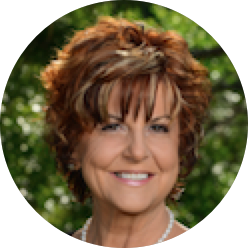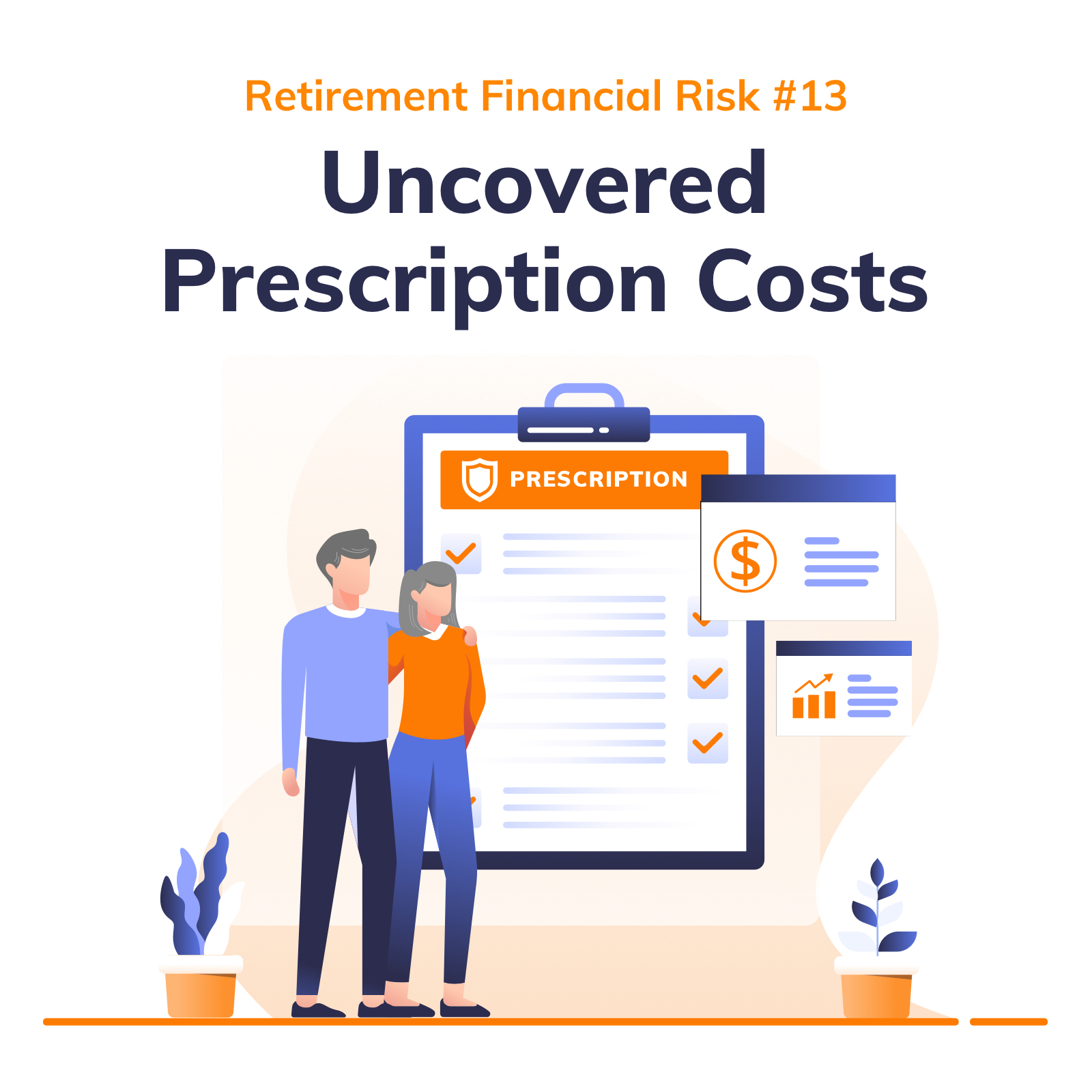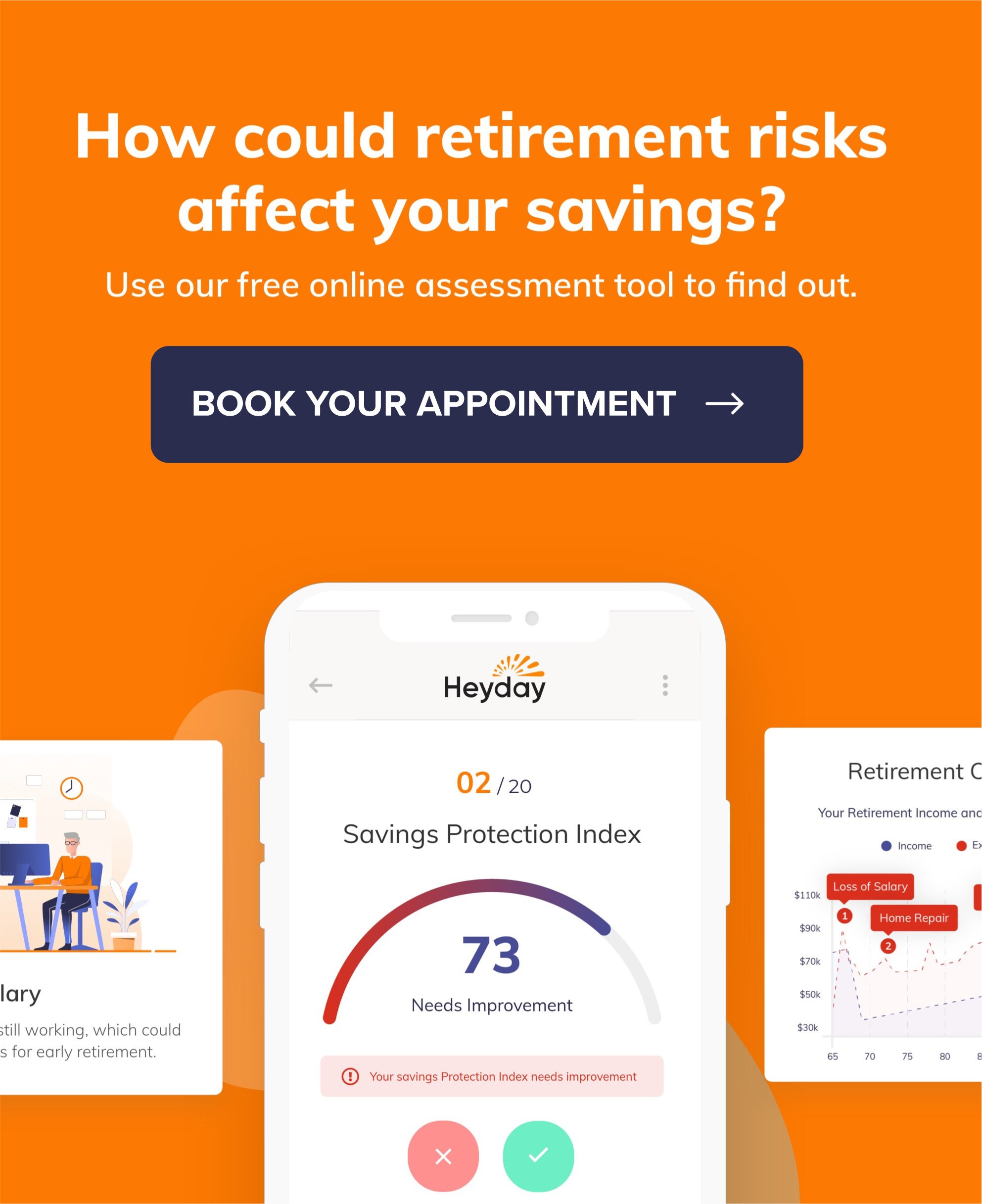Retirement Risk #13: Uncovered Prescription Costs — They Can Really Add Up In Retirement
Retirees May Be Surprised to See Their Monthly Drug Expenses
There’s a common misperception that all you retirees need is the basic level of Medicare coverage.
However, Medicare.gov reveals the aspects of Medicare available for retirees to consider, which include:
- Part A - covers hospital and hospice stays
- Part B - for doctor visits and common services associated with those visits
- Part C - also known as Medicare Advantage, Part C is a private alternative to Parts A and B
- Part D - covers prescription drugs
Some retirees may be surprised to discover the complexities of navigating Medicare coverage for all health-related needs. For prescriptions specifically, they typically have two Medicare options:
Option 1: Adding Medicare Part D to a plan that includes Parts A and B
Option 2: Securing coverage through Medicare Advantage (Part C) or other available Medicare health plans that cover prescription drugs.
Each retiree’s situation is different, and prescription costs may vary based on:
- Medications needed - there are different tiers for covered drugs, and prices may vary by your specific plan’s requirements. Some drugs may not be covered at all.
- Income level - additional monthly premiums may be added to the base if your income is over a certain threshold.
- Plan-specific costs - including deductibles, copays and coinsurance.
- Supplemental coverage - in some situations, Medigap coverage can be purchased to help offset out-of-pocket costs.
Enrollment rules and additional restrictions may apply. This article is intended to give a high-level overview of what retirees can expect to pay for prescriptions and is not designed to sell or promote any Medicare product. Visit Medicare.gov or consult with a Medicare professional to determine the appropriate coverage for your situation.
“A complete retirement plan may need to include setting money aside for uncovered prescriptions. When the prescriptions needed aren't covered, the costs can wear down retirement savings over time.”
— Eric Stratton, Heyday founder
Projected Costs for Coverage
Some of the sample costs associated with Medicare Part D may include:
- Premium - the nationwide base premium $32.74, with adjustments for income above a certain threshold
- Deductible - highest allowed by Medicare is 2020 is $435
- Copayment - fixed amount based on your policy. For example, generic drugs may be $5 and brand names may be $25
- Coinsurance - for higher drug tiers you may also be required to pay a 25% coinsurance bill
Mind the Medicare “Donut Hole”
Retirees may find themselves in a Medicare coverage gap, referred to as a Medicare “donut hole”.
In 2020, once retirees spend $4,020 on covered prescriptions, there’s a temporary limit on what the plan will cover for the drugs. At that point, only 75% of your generic and prescription drugs will be covered until your out-of-pocket expenses reach a certain threshold and you are moved out of the gap.
After spending $6,350 in out-of-pocket in 2020, you’re out of the prescription drug coverage gap. Then, you automatically receive catastrophic coverage, ensuring only a small coinsurance or copayment is required for covered drugs for the remainder of the year.
Of course, this gap only applies to covered prescriptions. Others can fall 100% on the shoulders of the retiree and/or their supplemental prescription policy.
Accounting for Prescription Drug Expenses
According to research by GoodRx, prices for generic and name-brand drugs have increased 32% from 2014 to 2019. No one can predict what will happen to prices over the course of the next two years, much less the average length of retirement.
To help cover costly prescriptions, retirees could consider:
Reducing discretionary spending - some may choose to cut their spending on hobbies and leisure activities to help put a dent in their prescription costs. Yet, this could result in less enjoyment during their most active and mobile retirement years.
Taking on debt - retirees could opt to pay for prescriptions with a credit card, which could add up to substantial debt over time. Plus, the interest and monthly expenses could impact their overall monthly budget and available income for other expenses and the fun stuff.
Cracking their nest eggs even further - taking additional withdrawals may have tax implications, and could shorten the longevity of their retirement savings. And if retirees fall into the donut hole, they could need an additional $4,000+ per year just to help cover the cost of medications. Consulting with a tax professional is recommended prior to making any additional withdrawals.
Consider this hypothetical example:
Jerry and Mary, both 67, are newly retired. They purchased a Medicare Part D plan to help with prescription drugs for her Type 2 diabetes, high blood pressure, and high cholesterol.
Their estimated annual out-of-pocket cost for those three medications is approximately $1,700, plus another $539 in premiums for the year. These prescription expenses could add up over the course of retirement, costing over $22,000 in 10 years.
How could Jerry and Mary pay for these ongoing out-of-pocket expenses?
Charge the bill every month, accumulating more than $2,000 in credit card debt each year?
Cancel their weekly dinner date and trip to see the grandkids?
As you can imagine, most of us wouldn’t be happy with any of those options. Without proper planning, underestimated prescription costs could lead to having to make unpleasant choices about spending in retirement.
One way to help prevent prescriptions from eroding retirement savings? By conducting a retirement risk assessment. Once retirees and pre-retirees weigh their savings against the cost of potential challenges, they can get a better idea of how at-risk they are to common retirement risks. Then, they can speak with a financial professional to adjust their strategy as needed.
Heyday’s Custom Retirement Review is a free online risk assessment that helps retirees see where they stand by answering a few questions.
Ready to assess your risk exposure? Start here.

Written by Cindy Collins
Forbes Contributor & Retirement Financial Professional
Cindy Collins is a Heyday Retirement contributor with over 30 years of experience in personal financial services.

About Heyday
Heyday is a premier source for comprehensive tools and informative content designed to help retirees build a secure retirement income plan.
Subscribe
Stay in the know on a wide range of retirement topics.








